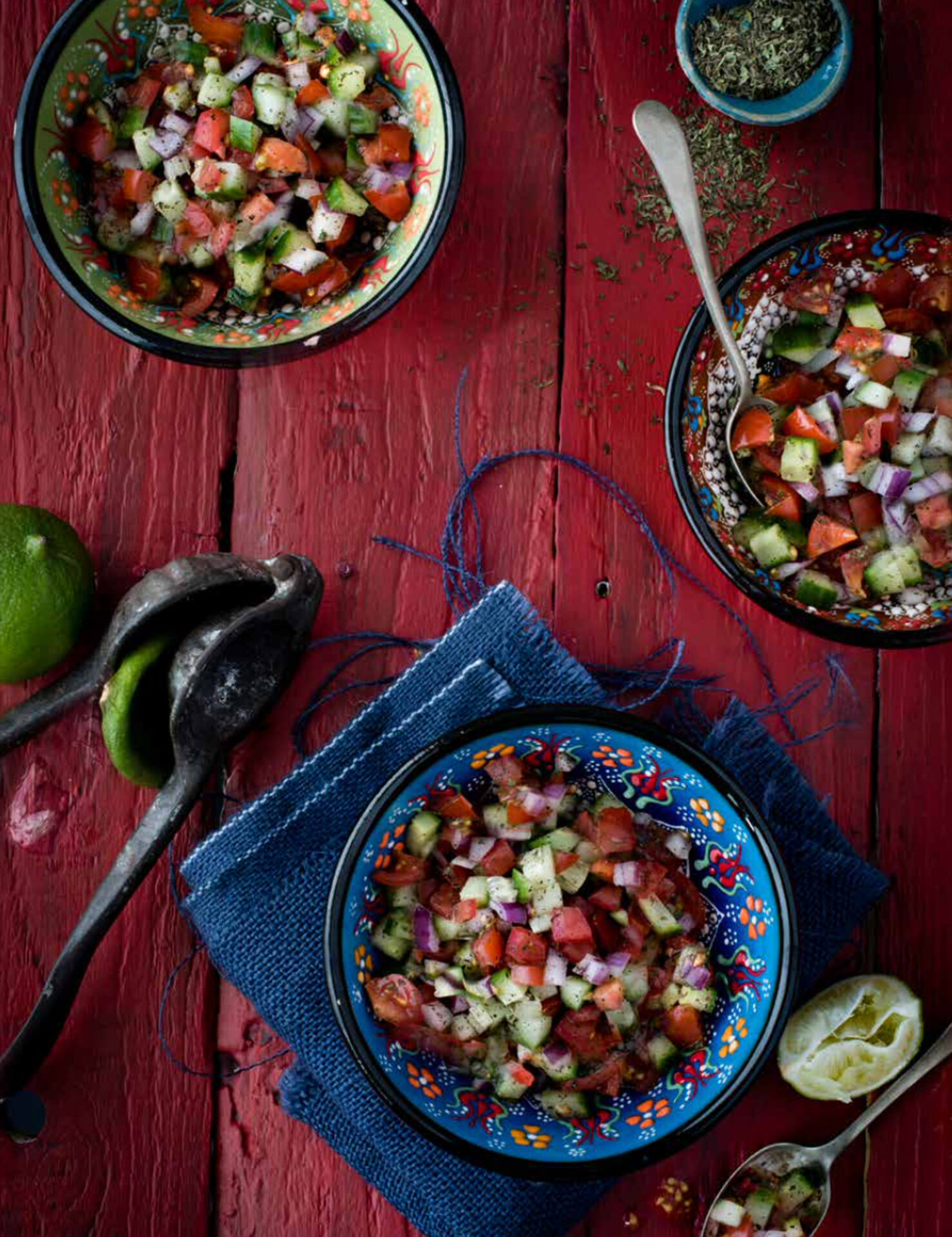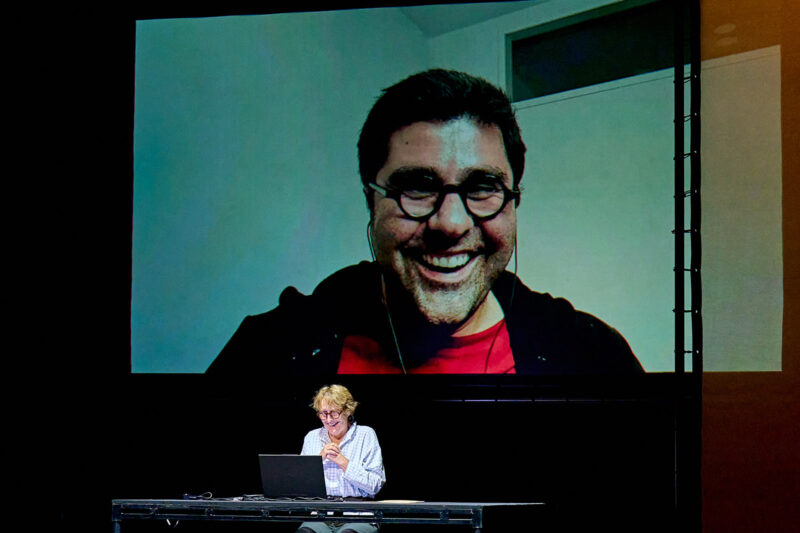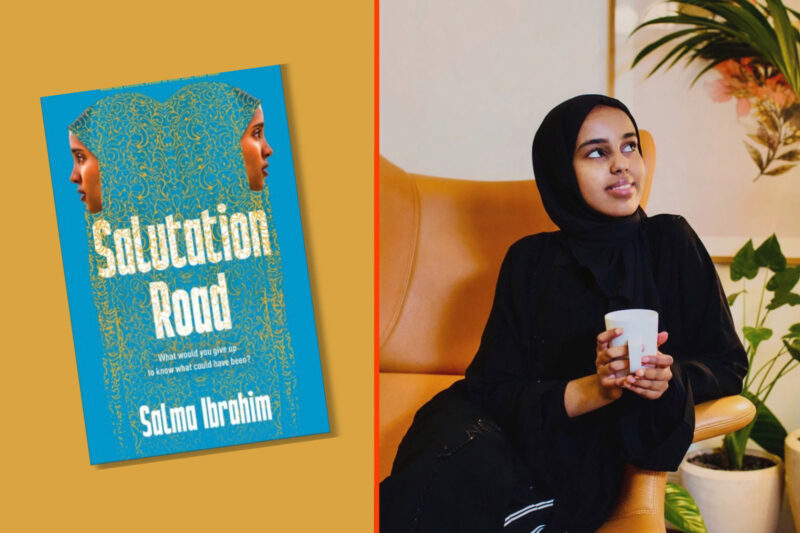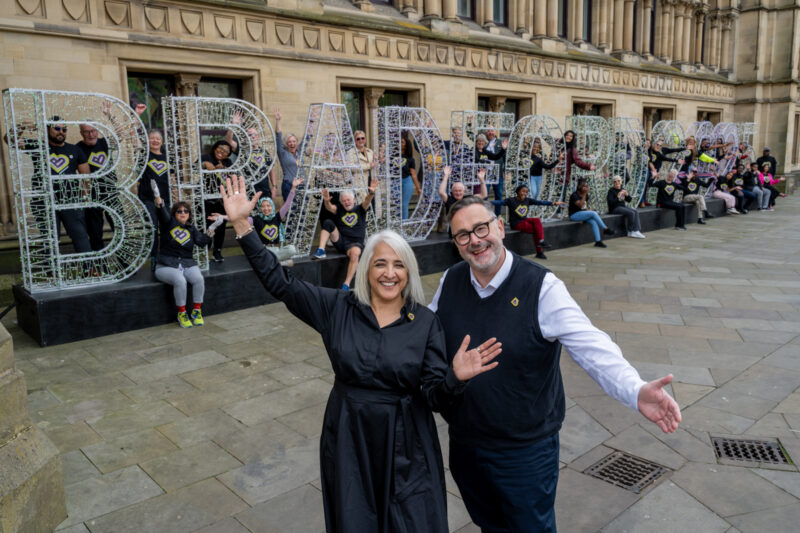
Atoosa Sepehr Q&A: ‘Food is a form of healing’
Iranian cookery writer and nutritionist Atoosa Sepehr has had her life story turned into a one-woman play called My English Persian Kitchen. Photograph by Brian Kavanagh, courtesy of Atoosa Sepehr
The bestselling author of From a Persian Kitchen on taking chances and seeing her life story on the stage
–
Atoosa Sepehr has kept the memories and smells of Persian spices close to her heart since she moved to the UK from Iran almost two decades ago. The author and nutritional therapist, 47, fled to London from an abusive marriage and used cooking as a way to build a community in an unfamiliar city.
During that period she perfected recipes passed down from her mother and grandmother and collated them in the bestselling book From a Persian Kitchen, published in 2018. Just a few months later, David Luff, creative producer of London’s Soho Theatre, read an interview with Sepehr and approached her about making a play based on her experience.
Sepehr worked with playwright Hannah Khalil on the script for My English Persian Kitchen. The one-woman show, which ran at the Edinburgh Festival this summer and is now showing at Soho Theatre, tells the story of Sepher’s escape from Iran while the actor cooks a meal live on stage.
Here, Sepehr talks about finding peace through food, the experience of watching her life story on stage and the many benefits of saffron.
This interview has been edited for length and clarity.
Can you tell us about the story behind My English Persian Kitchen?
It’s not really about Iran or a particular place. It’s about what it means to start again in a place that you’re completely unfamiliar with — like a rebirth.
The play is about my journey from Iran to London, when I tried to get out of a bad marriage. It captures how I escaped the country and how lucky I was to get out. I knew that if I wanted to get divorced, my husband would not let me. Another problem was that he would have banned me from leaving the country, as your husband can block your passport there. I got to the point where I realised the only way to leave him and save myself was to urgently get out of the country without telling him.
How does your kitchen come into the story?
Before I came here, I never wanted to cook, because I didn’t want to be associated with being a woman in the kitchen. I wanted to work. I wanted to be successful and be equal to a man in a patriarchal society, so I never cooked in Iran.
When I came to this country I was feeling very lonely. Slowly, I realised that food, the smell of it, the smell of turmeric or cumin, would just lift me up. It took me back home, and I started cooking and trying to recreate my mum’s, grandma’s and aunt’s recipes, just to get that comfort I had at home. I ended up with a notebook full of recipes from my relatives, all the people I knew and had memories of. That notebook ended up as a cookbook.
What has it been like for you to see this very personal story play out on stage?
It wasn’t easy in the beginning, especially when we started, as I was feeling all of those difficult emotions again. It felt very surreal to see what happened to me from the outside, as it was something that I really didn’t want to talk about at that moment. Now, I can see my experience more clearly than before. I was also quite worried how people would react to it, but the response was fantastic after the play.
I imagine the response has been so positive because it touches on the experiences of so many women around the world.
Yes, it’s not just the story of a woman in Iran. Most of us women in every part of the world will experience some sort of abuse, either in an abusive relationship or even at work. They feel some kind of being less than a man, so these are themes that are everywhere. It’s just not in Iran. It’s a general problem.
What do you hope that people will get from the play?
It’s hope and also that even the worst things in life are not forever — if life gives you an opportunity, just grab it, and don’t be scared to make changes.
You are now a food nutritionist. How did you go from developing recipes to digging into the science behind them?
In Iran as soon as they put food in front of you, people will start talking about the benefits of it. For example, as a kid I was always told that if you have saffron, you’re going to end up laughing. Then, after doing some research, I realised that, yes, that’s very true, because it increases your serotonin. It’s a proven antidepressant.
I had always looked at making food as a very creative process, but because I was cooking those recipes so many times, I really wanted to learn the science behind it.
I get a lot of calmness and release from my problems through cooking and eating. Now I have the opportunity to help other people and I’m very honoured that I can do that.
My English Persian Kitchen is on at Soho Theatre until 5 October.

Shirazi salad
Recipe from Atoosa Sepehr’s book From a Persian Kitchen
“This is a traditional salad from Shiraz, the city where I was born and after which Shiraz wine is named. The original recipe uses sour grape juice, but it can be difficult to find in the west, so I substitute lime juice. The recipe also requires that you chop the tomatoes and cucumbers into very fine dice. If you are short of time then you can chop them into larger pieces, but don’t make them too large. I do prefer to use baby cucumbers as they tend to be crunchier and less juicy.”
Serves 4
Ingredients:
- 400g baby cucumbers or 1 large cucumber
- 400g vine tomatoes
- 1 small red onion
- 60ml fresh lime juice
- 1 tbsp dried mint
- 1 tsp sumac
- salt
Method:
Chop the cucumbers into cubes no bigger than 1cm. If you are using a large cucumber lay it horizontally on a chopping board. Cut long slits down the length of the cucumber from approximately 2cm from the end. Give the cucumber a half turn and cut slits the same length down the sides. Now, slice the cucumber sticks that are still attached to the end of the cucumber evenly. Place the chopped cucumber in a large bowl.
Chop the tomatoes to match the size of the cucumber and add to the bowl.
Chop the onion into similar-sized cubes and add to the bowl.
Add the lime juice, dried mint, sumac and salt to taste and stir gently to mix.
Serve immediately or chill for up to half an hour before serving.
 Newsletter
Newsletter












